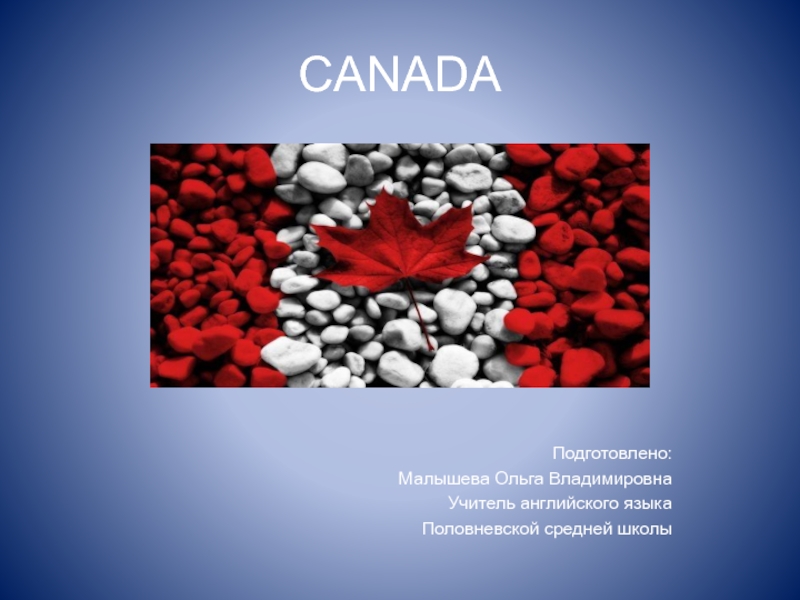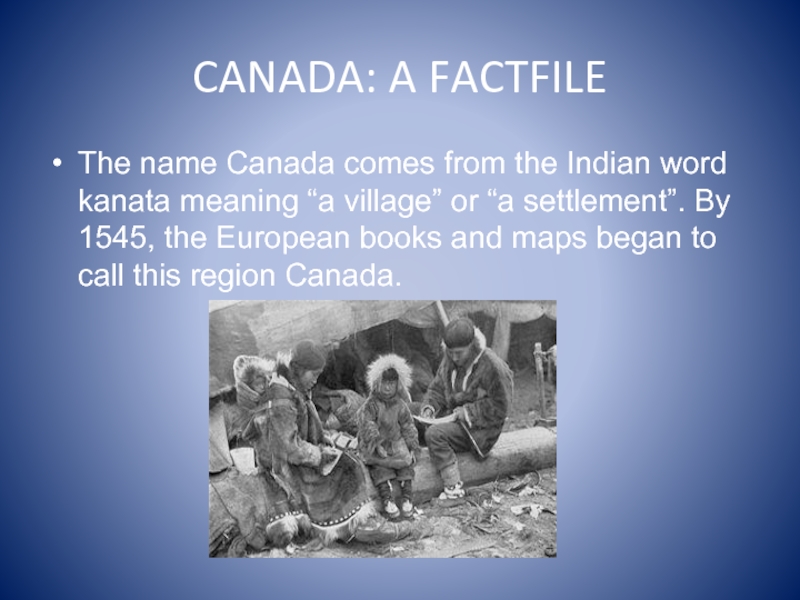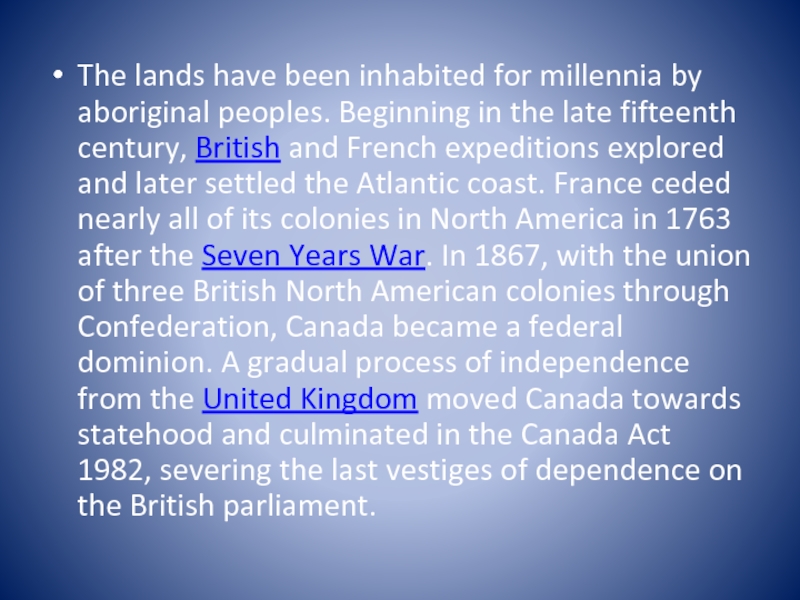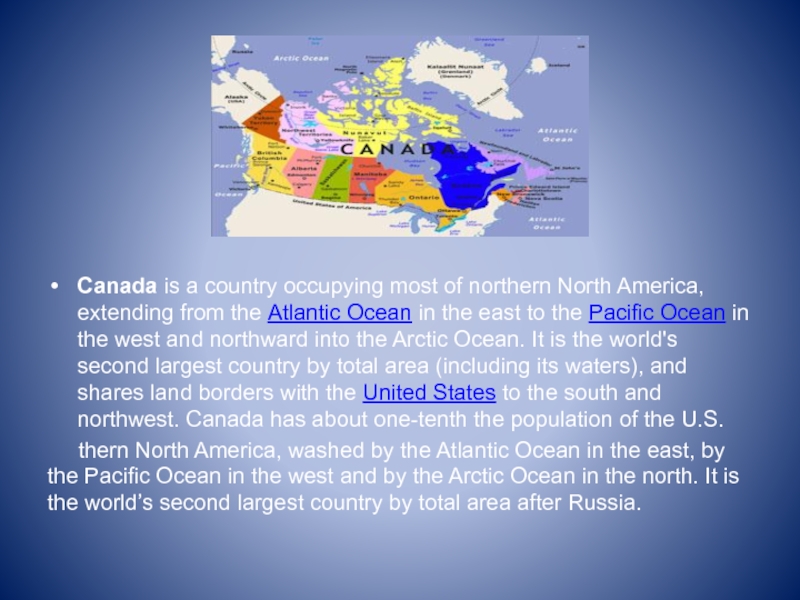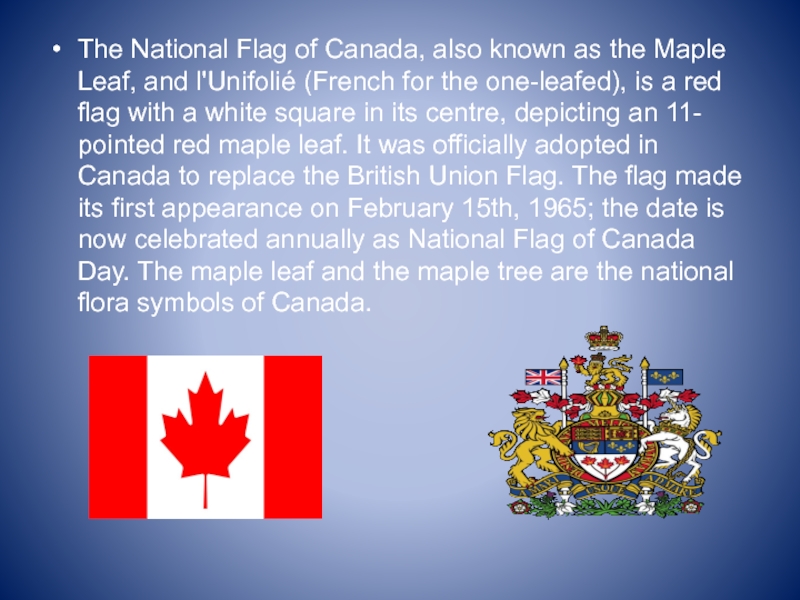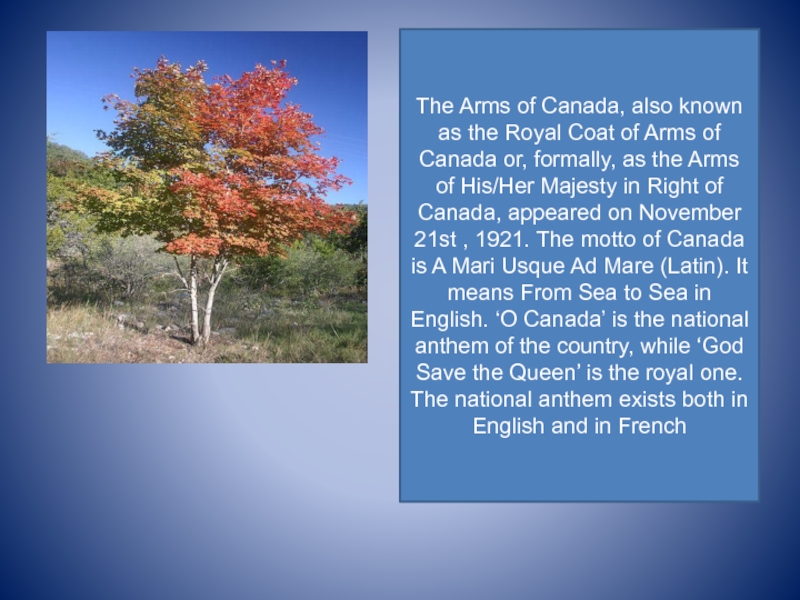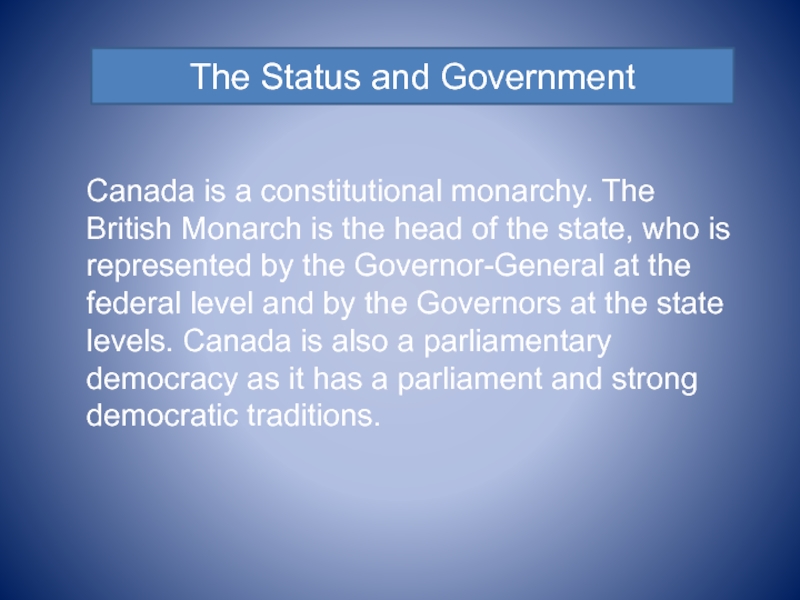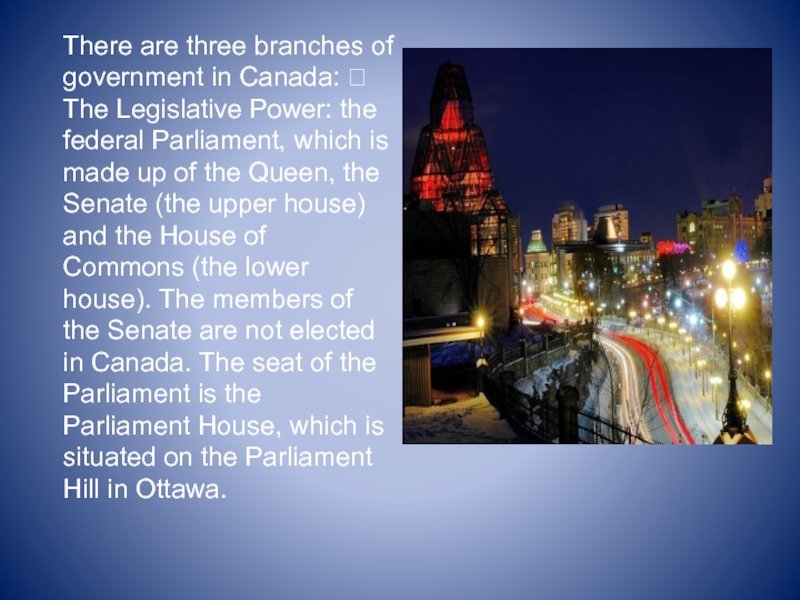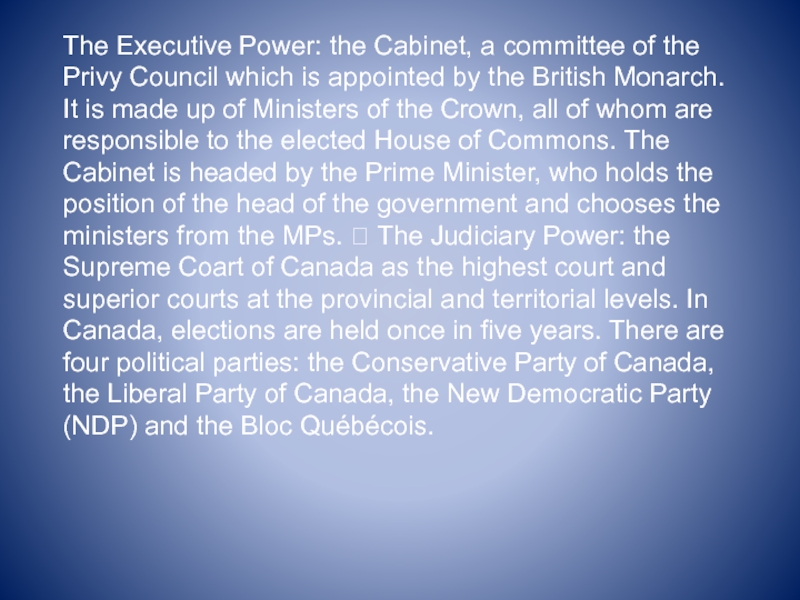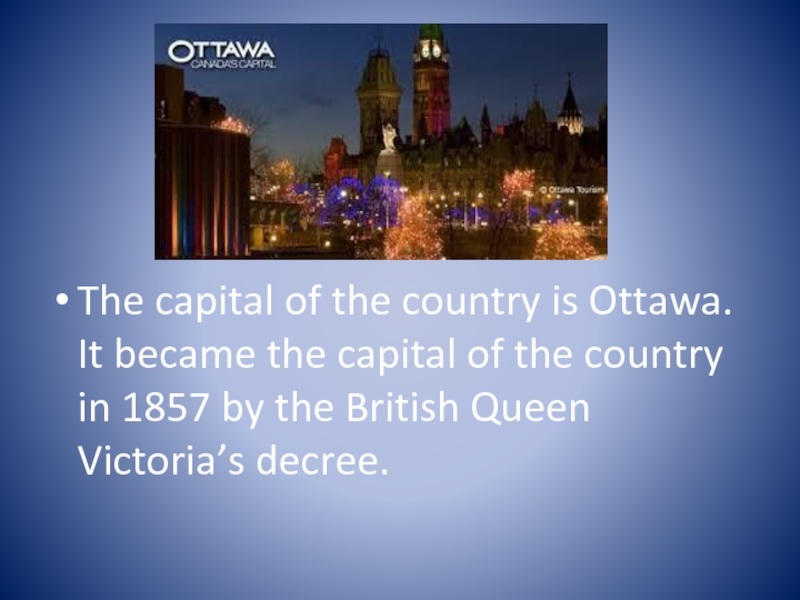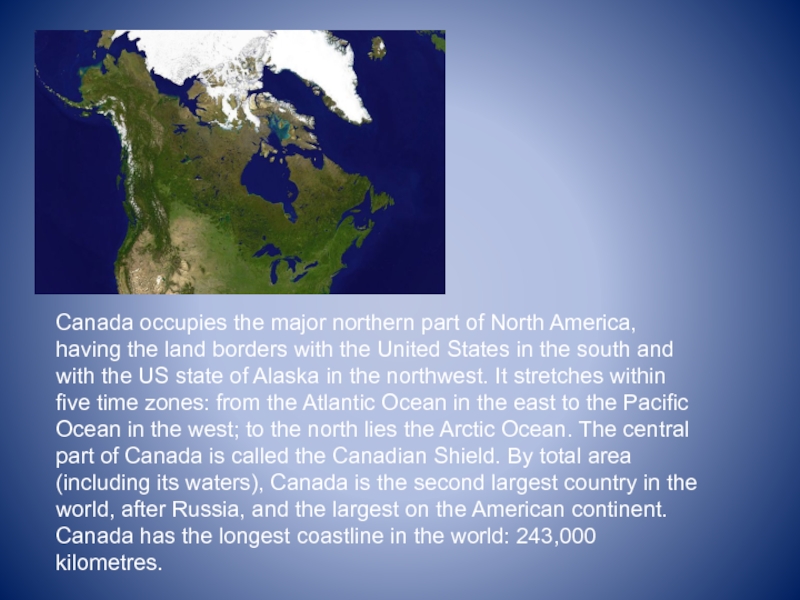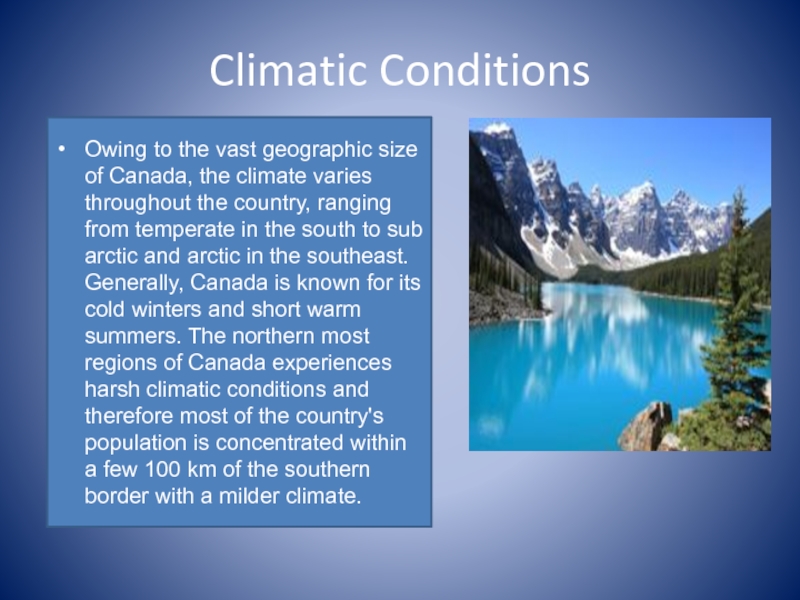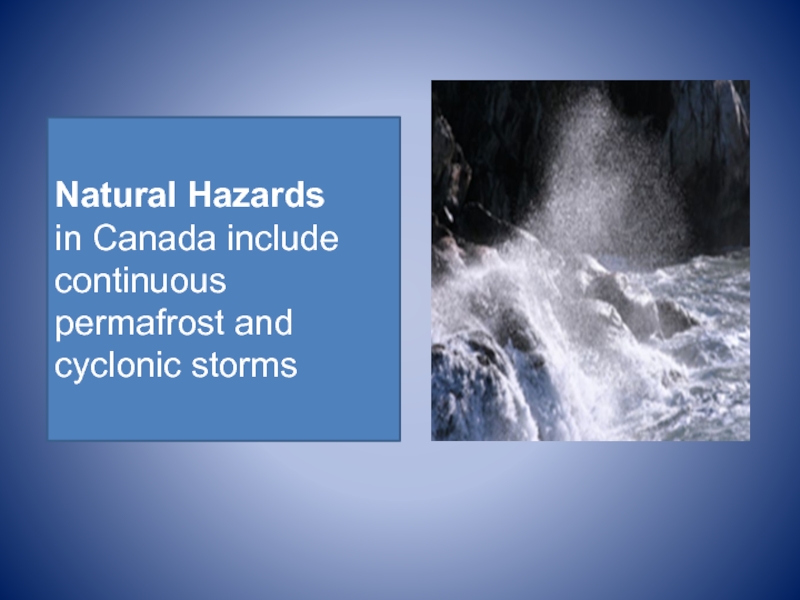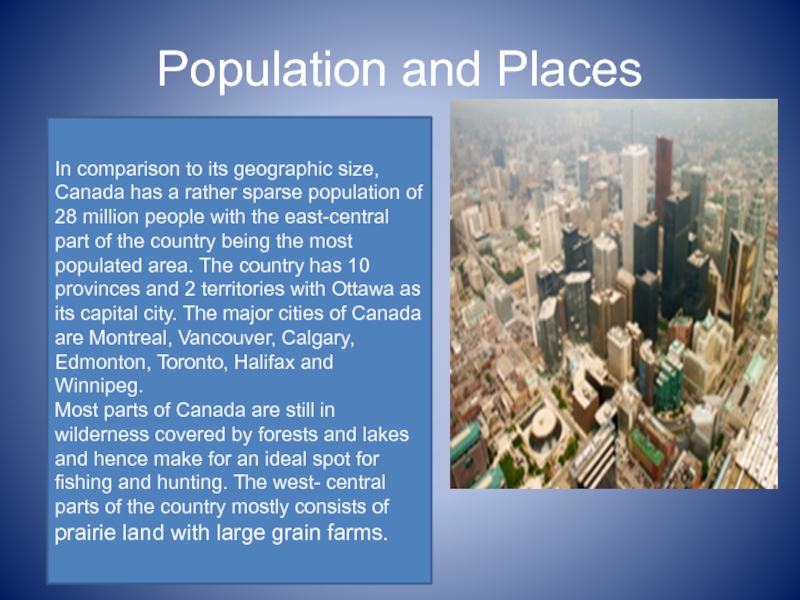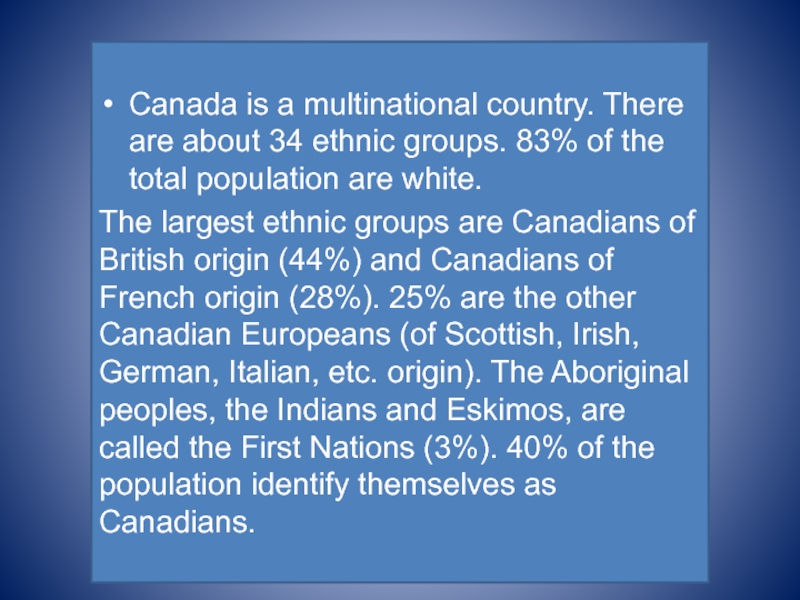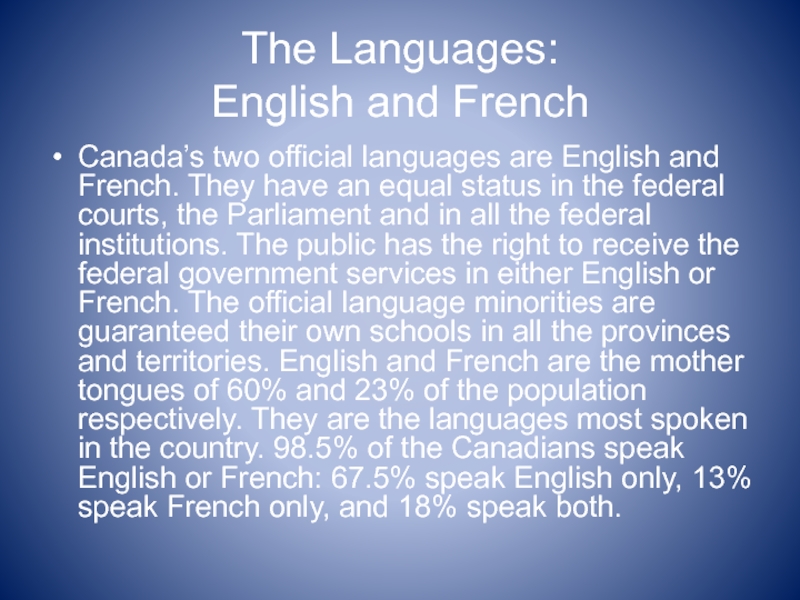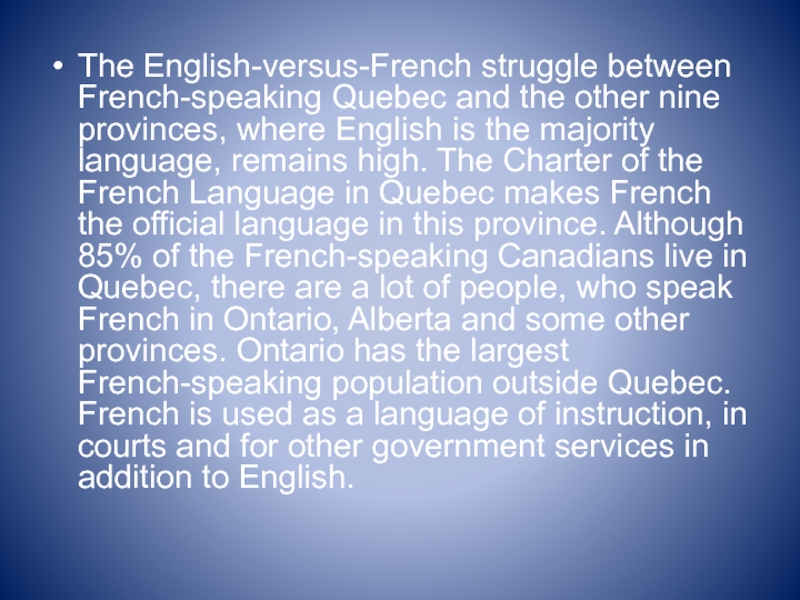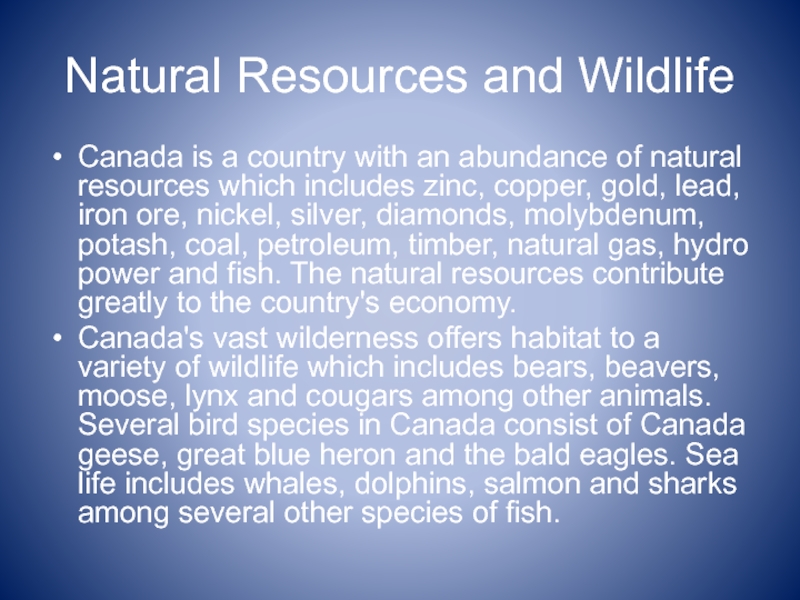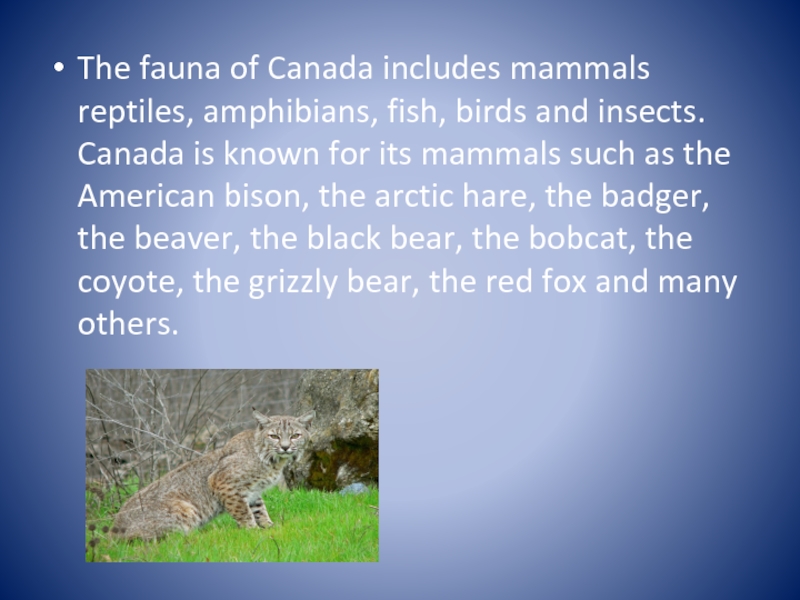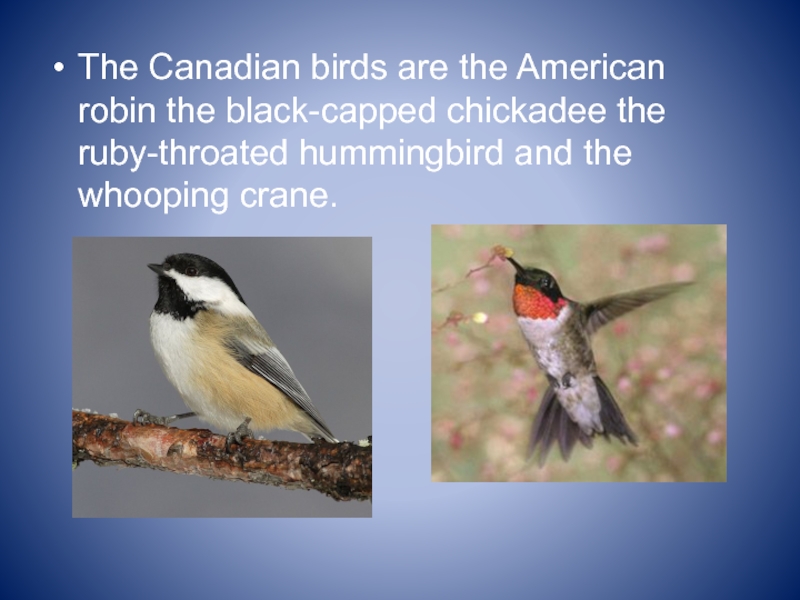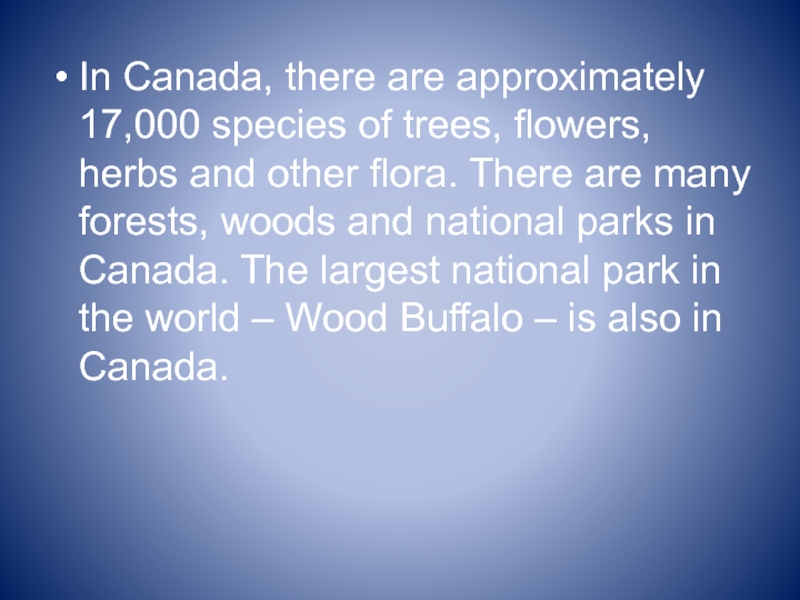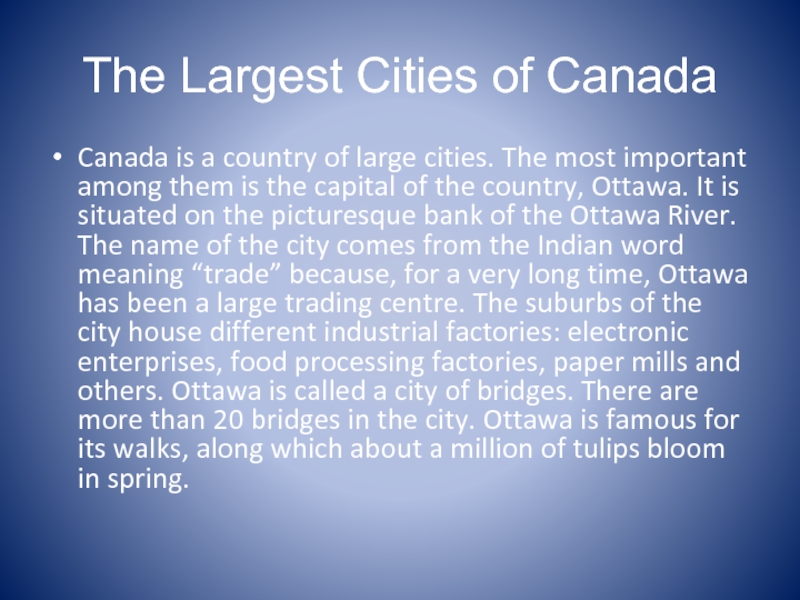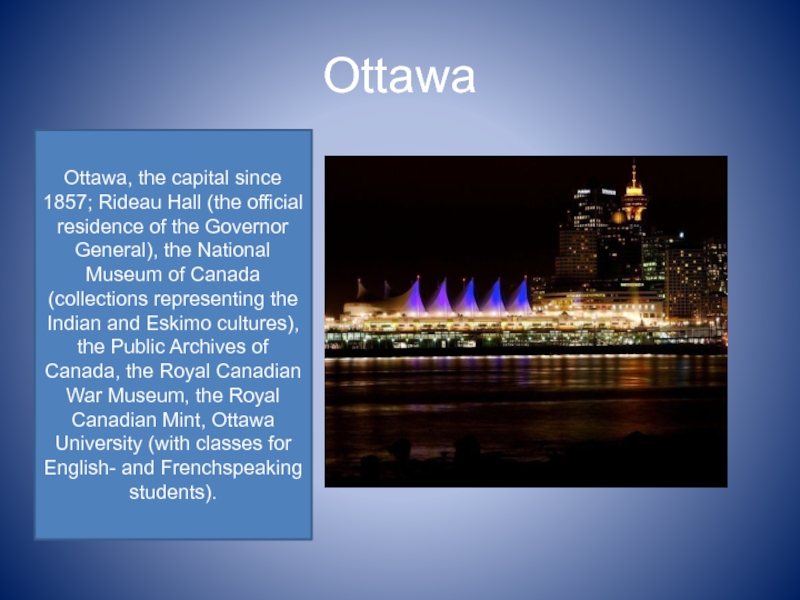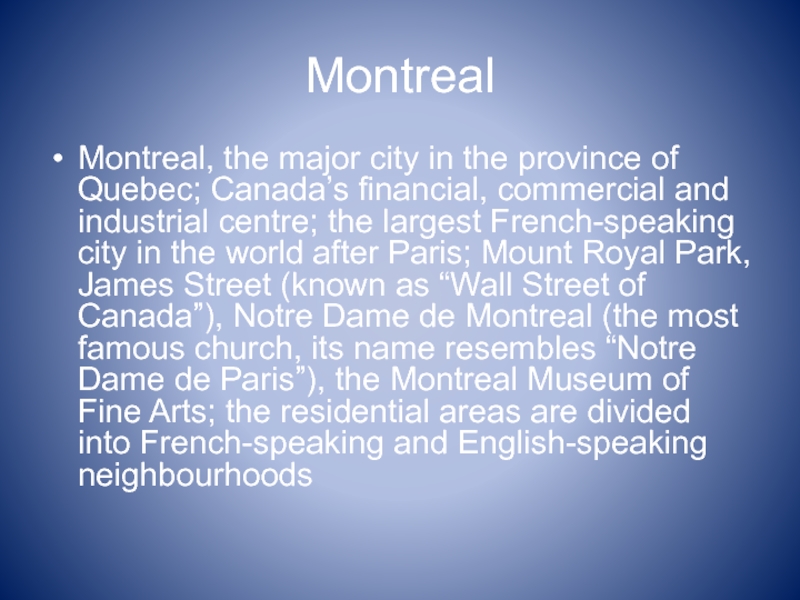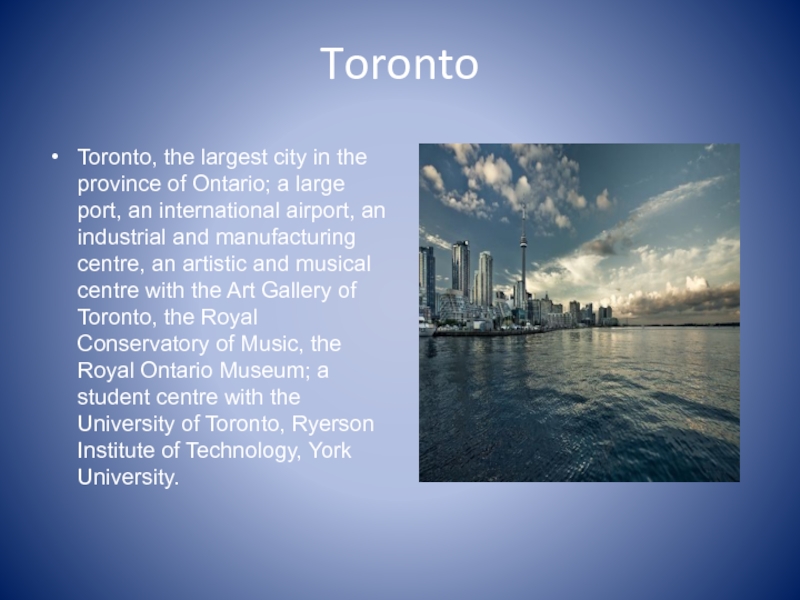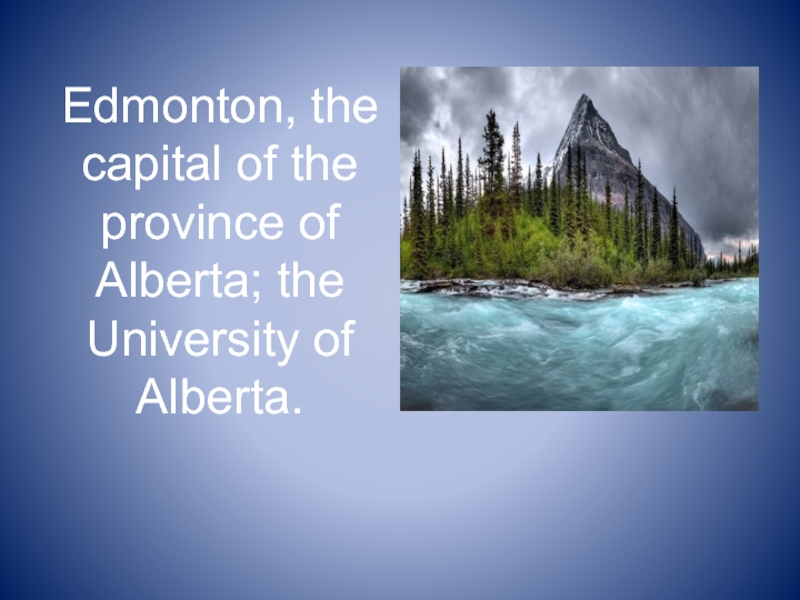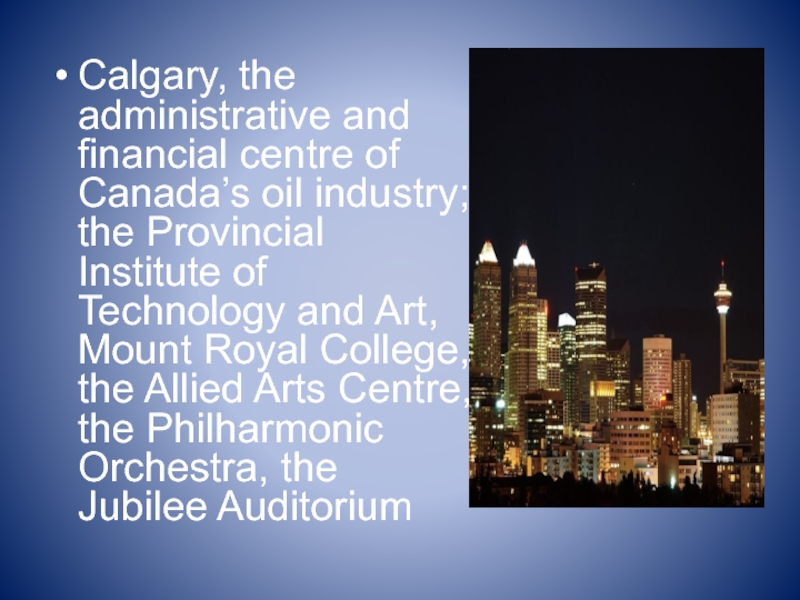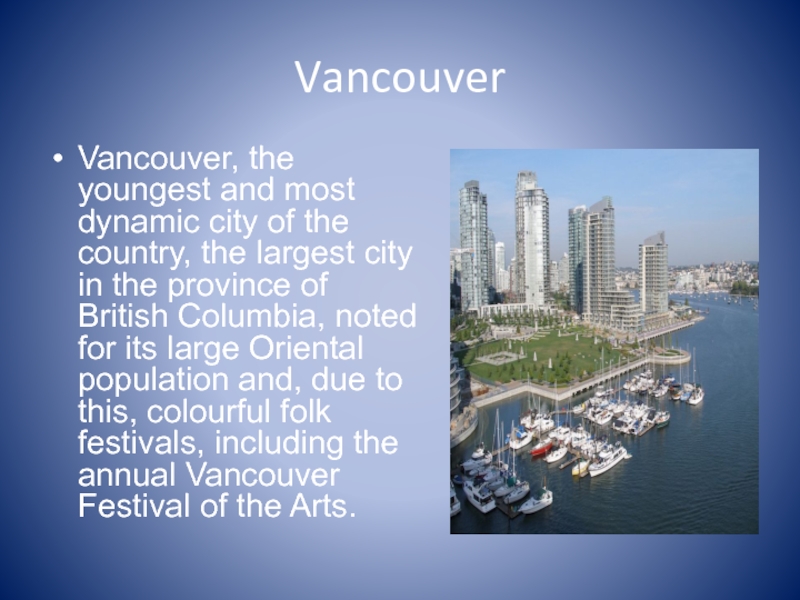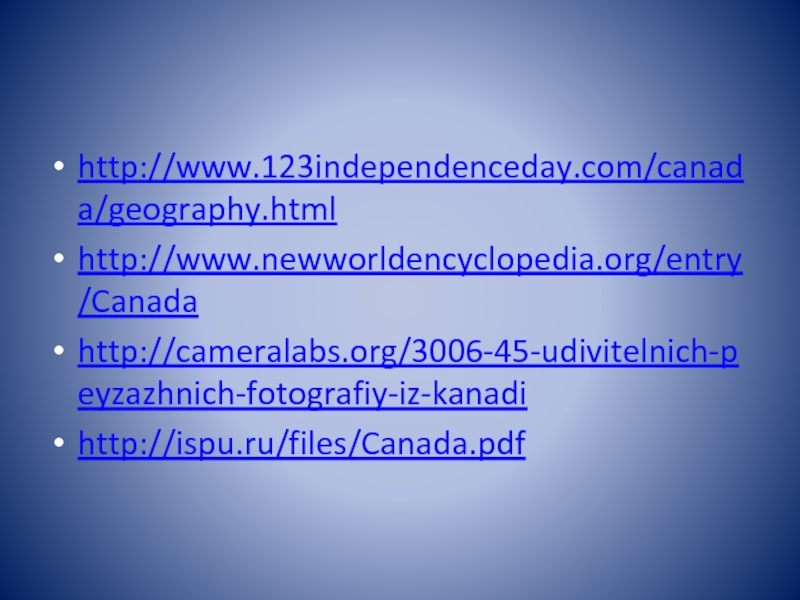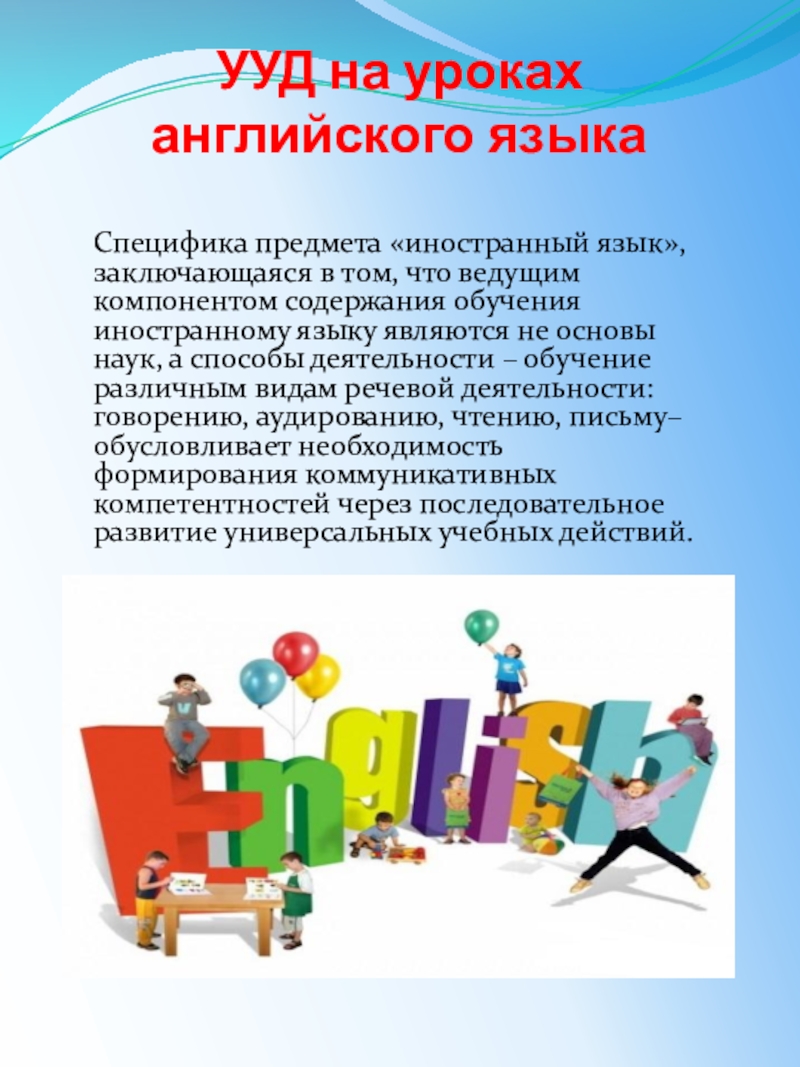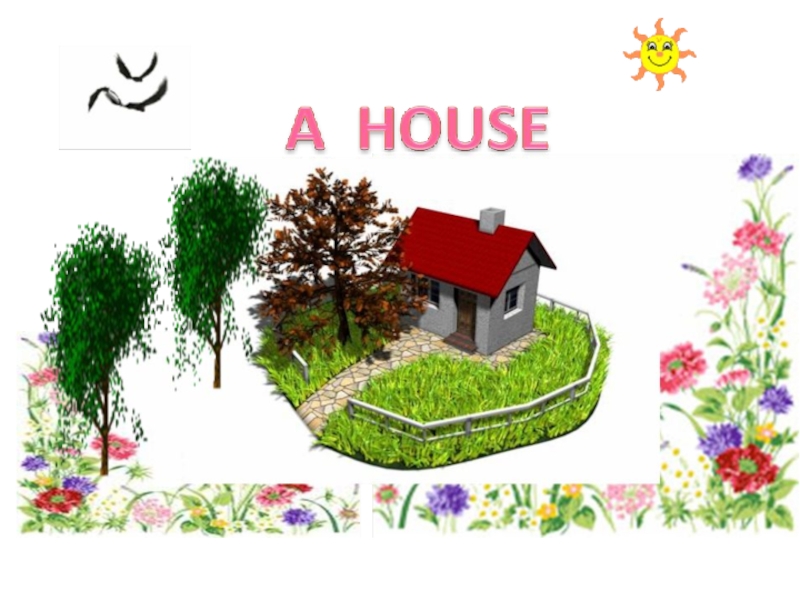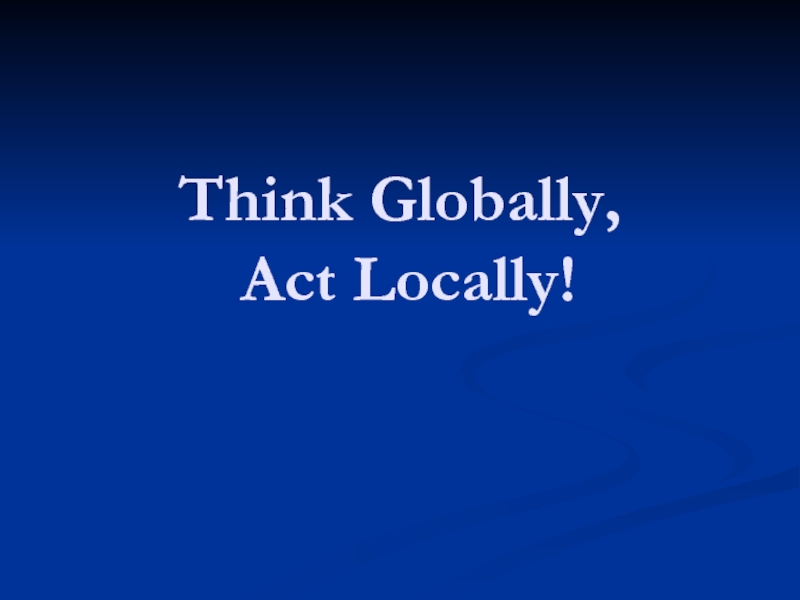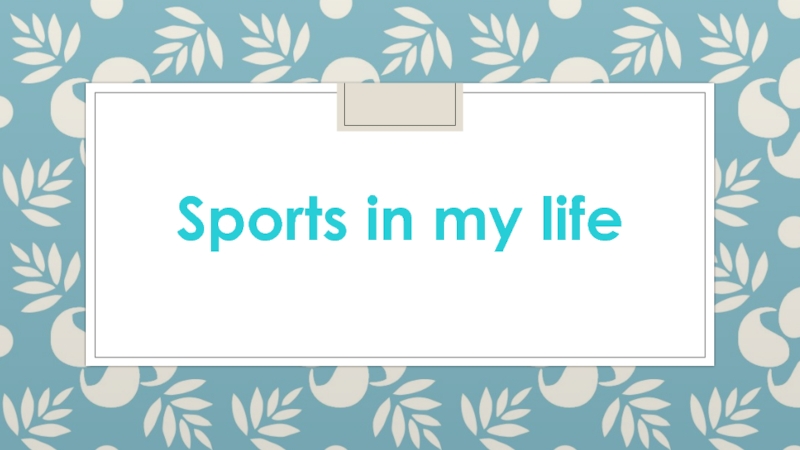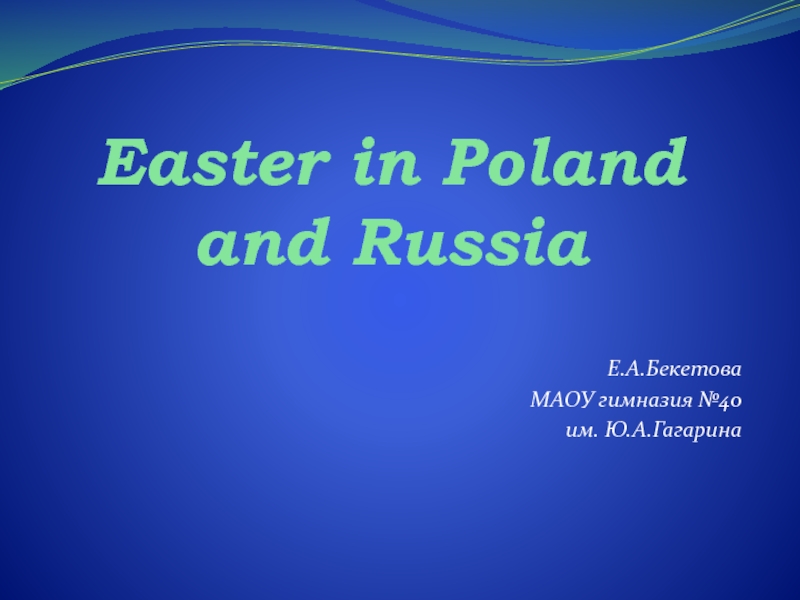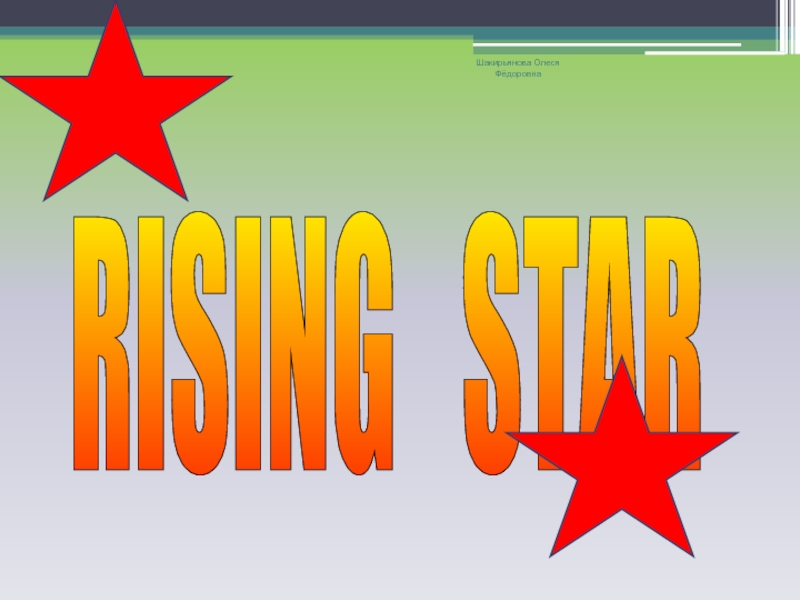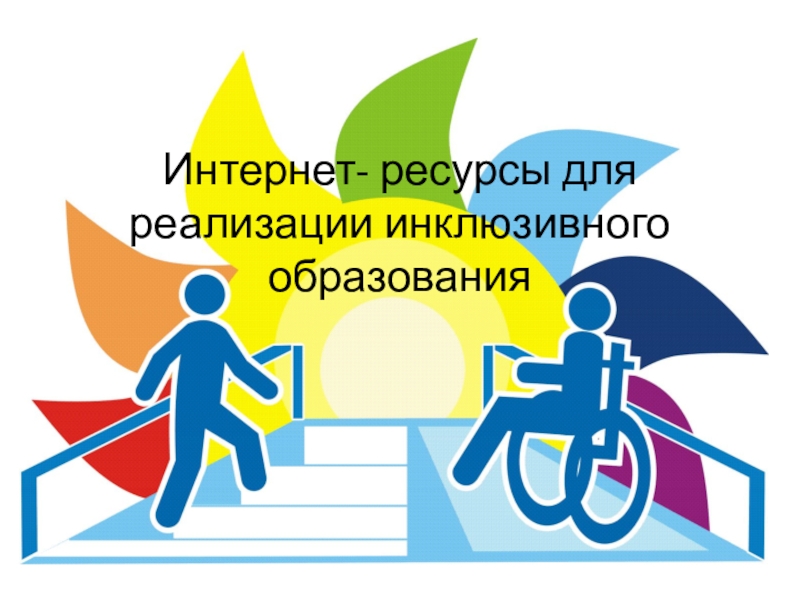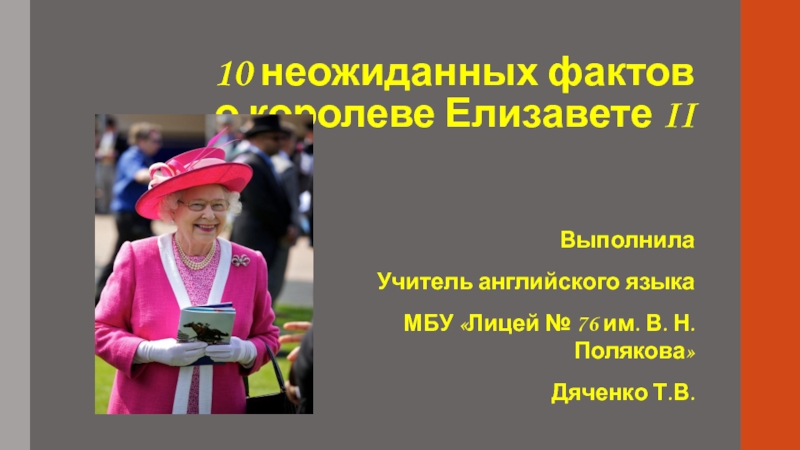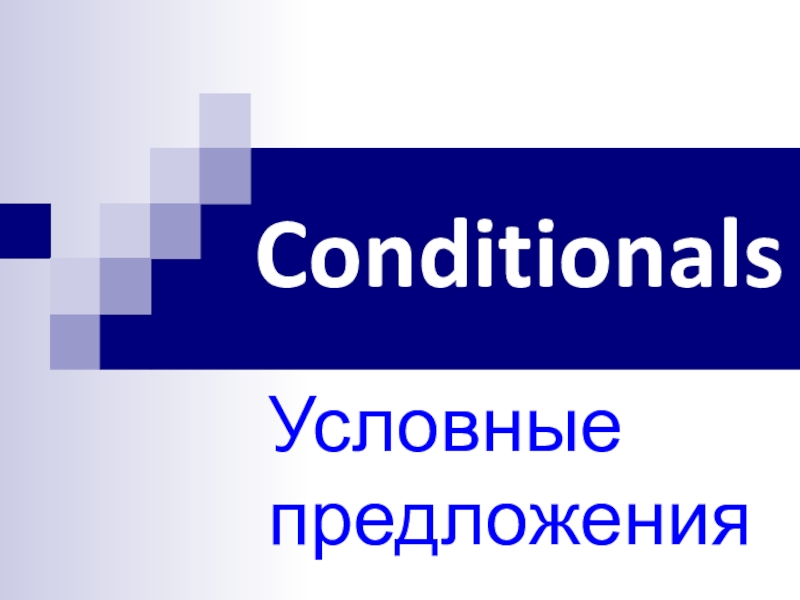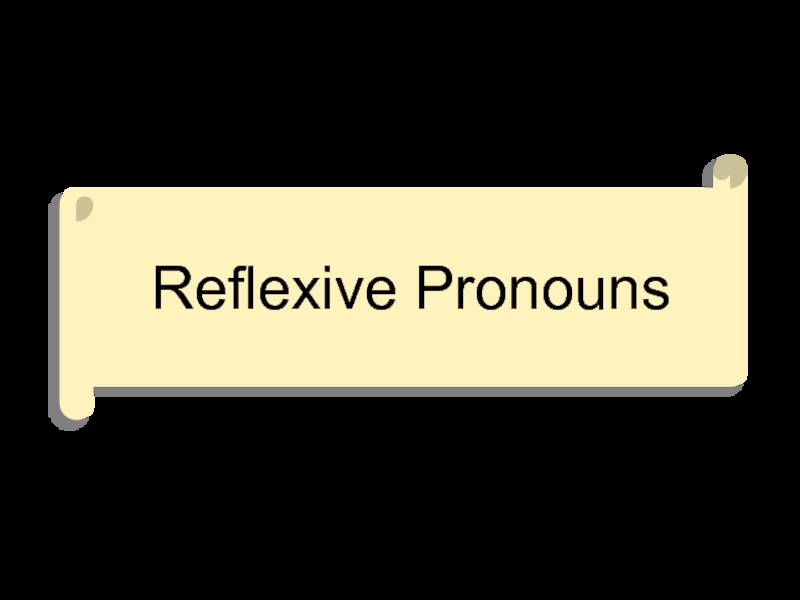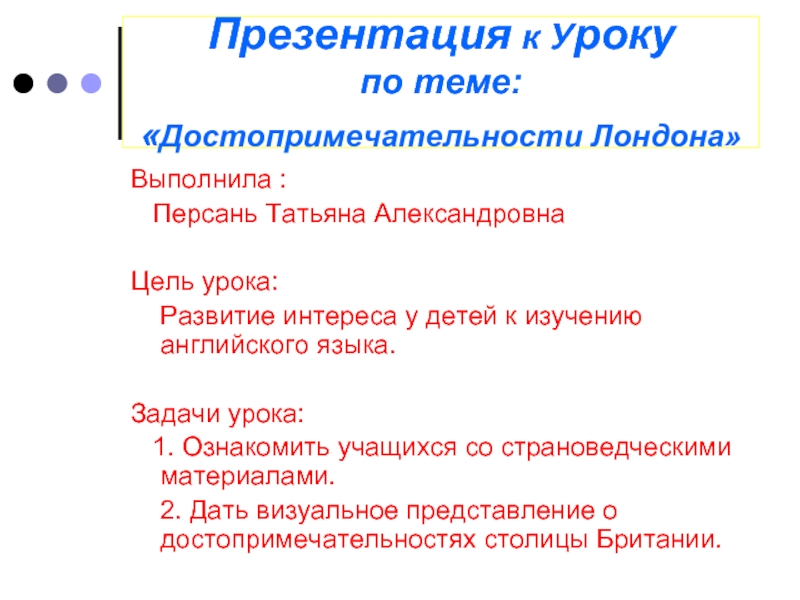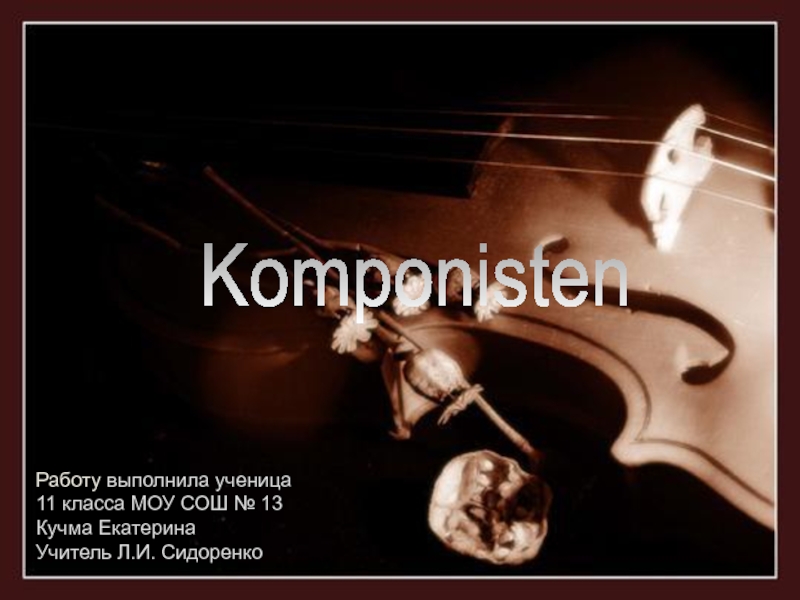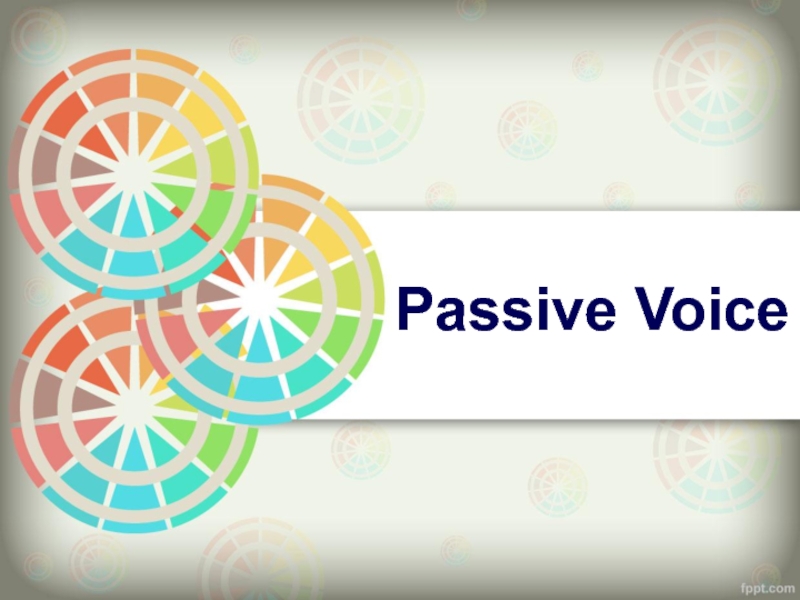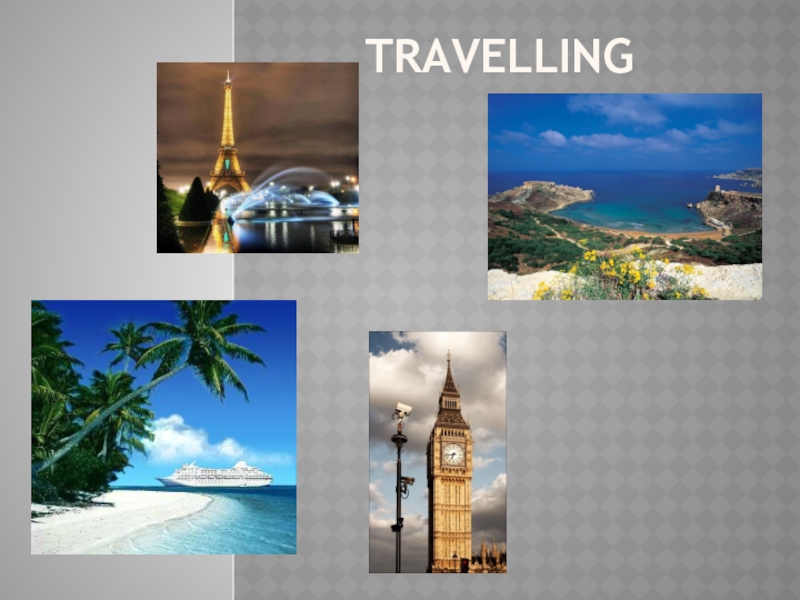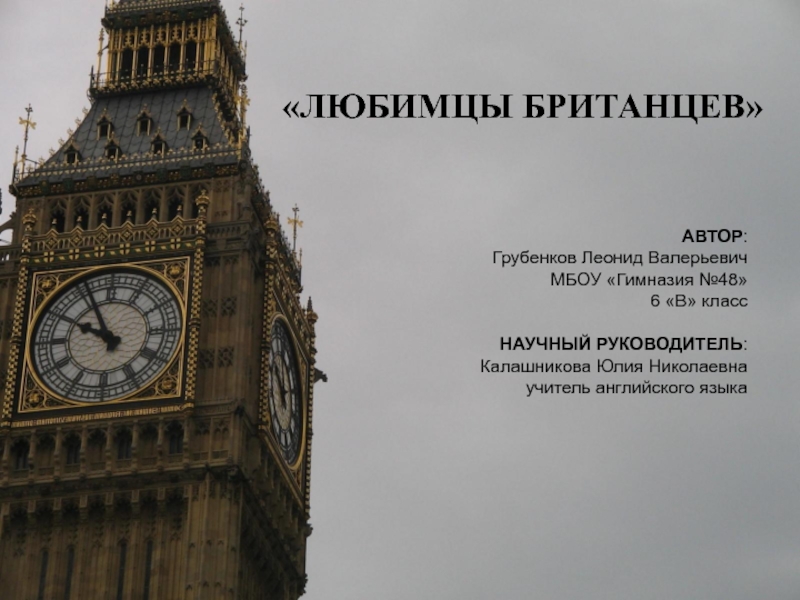Разделы презентаций
- Разное
- Английский язык
- Астрономия
- Алгебра
- Биология
- География
- Геометрия
- Детские презентации
- Информатика
- История
- Литература
- Математика
- Медицина
- Менеджмент
- Музыка
- МХК
- Немецкий язык
- ОБЖ
- Обществознание
- Окружающий мир
- Педагогика
- Русский язык
- Технология
- Физика
- Философия
- Химия
- Шаблоны, картинки для презентаций
- Экология
- Экономика
- Юриспруденция
Canada. Presentation
Содержание
- 1. Canada. Presentation
- 2. CANADA: A FACTFILEThe name Canada comes from
- 3. The lands have been inhabited for millennia
- 4. Canada is a country occupying most of northern
- 5. The National Flag of Canada, also known
- 6. The Arms of Canada, also known as
- 7. The Status and GovernmentCanada is a constitutional
- 8. There are three branches of government in
- 9. The Executive Power: the Cabinet, a committee
- 10. The capital of the country is Ottawa.
- 11. Canada occupies the major northern part of
- 12. Climatic ConditionsOwing to the vast geographic size
- 13. Natural Hazardsin Canada include continuous permafrost and cyclonic storms
- 14. Population and PlacesIn comparison to its geographic
- 15. Canada is a multinational country. There are
- 16. The Languages: English and FrenchCanada’s two
- 17. The English-versus-French struggle between French-speaking Quebec and
- 18. Natural Resources and WildlifeCanada is a country
- 19. The fauna of Canada includes mammals reptiles,
- 20. The Canadian birds are the American robin
- 21. In Canada, there are approximately 17,000 species
- 22. The Largest Cities of CanadaCanada is a
- 23. OttawaOttawa, the capital since 1857; Rideau Hall
- 24. MontrealMontreal, the major city in the province
- 25. TorontoToronto, the largest city in the province
- 26. Edmonton, the capital of the province of Alberta; the University of Alberta.
- 27. Calgary, the administrative and financial centre of
- 28. VancouverVancouver, the youngest and most dynamic city
- 29. http://www.123independenceday.com/canada/geography.htmlhttp://www.newworldencyclopedia.org/entry/Canadahttp://cameralabs.org/3006-45-udivitelnich-peyzazhnich-fotografiy-iz-kanadihttp://ispu.ru/files/Canada.pdf
- 30. Скачать презентанцию
CANADA: A FACTFILEThe name Canada comes from the Indian word kanata meaning “a village” or “a settlement”. By 1545, the European books and maps began to call this region Canada.
Слайды и текст этой презентации
Слайд 1CANADA
Подготовлено:
Малышева Ольга Владимировна
Учитель английского языка
Половневской средней школы
Слайд 3The lands have been inhabited for millennia by aboriginal peoples.
Beginning in the late fifteenth century, British and French expeditions explored and
later settled the Atlantic coast. France ceded nearly all of its colonies in North America in 1763 after the Seven Years War. In 1867, with the union of three British North American colonies through Confederation, Canada became a federal dominion. A gradual process of independence from the United Kingdom moved Canada towards statehood and culminated in the Canada Act 1982, severing the last vestiges of dependence on the British parliament.Слайд 4
Canada is a country occupying most of northern North America, extending
from the Atlantic Ocean in the east to the Pacific Ocean in the
west and northward into the Arctic Ocean. It is the world's second largest country by total area (including its waters), and shares land borders with the United States to the south and northwest. Canada has about one-tenth the population of the U.S.thern North America, washed by the Atlantic Ocean in the east, by the Pacific Ocean in the west and by the Arctic Ocean in the north. It is the world’s second largest country by total area after Russia.
Слайд 5The National Flag of Canada, also known as the Maple
Leaf, and l'Unifolié (French for the one-leafed), is a red
flag with a white square in its centre, depicting an 11- pointed red maple leaf. It was officially adopted in Canada to replace the British Union Flag. The flag made its first appearance on February 15th, 1965; the date is now celebrated annually as National Flag of Canada Day. The maple leaf and the maple tree are the national flora symbols of Canada.Слайд 6The Arms of Canada, also known as the Royal Coat
of Arms of Canada or, formally, as the Arms of
His/Her Majesty in Right of Canada, appeared on November 21st , 1921. The motto of Canada is A Mari Usque Ad Mare (Latin). It means From Sea to Sea in English. ‘O Canada’ is the national anthem of the country, while ‘God Save the Queen’ is the royal one. The national anthem exists both in English and in FrenchСлайд 7The Status and Government
Canada is a constitutional monarchy. The British
Monarch is the head of the state, who is represented
by the Governor-General at the federal level and by the Governors at the state levels. Canada is also a parliamentary democracy as it has a parliament and strong democratic traditions.Слайд 8There are three branches of government in Canada: The
Legislative Power: the federal Parliament, which is made up of
the Queen, the Senate (the upper house) and the House of Commons (the lower house). The members of the Senate are not elected in Canada. The seat of the Parliament is the Parliament House, which is situated on the Parliament Hill in Ottawa.Слайд 9The Executive Power: the Cabinet, a committee of the Privy
Council which is appointed by the British Monarch. It is
made up of Ministers of the Crown, all of whom are responsible to the elected House of Commons. The Cabinet is headed by the Prime Minister, who holds the position of the head of the government and chooses the ministers from the MPs. The Judiciary Power: the Supreme Coart of Canada as the highest court and superior courts at the provincial and territorial levels. In Canada, elections are held once in five years. There are four political parties: the Conservative Party of Canada, the Liberal Party of Canada, the New Democratic Party (NDP) and the Bloc Québécois.Слайд 10The capital of the country is Ottawa. It became the
capital of the country in 1857 by the British Queen
Victoria’s decree.Слайд 11Canada occupies the major northern part of North America, having
the land borders with the United States in the south
and with the US state of Alaska in the northwest. It stretches within five time zones: from the Atlantic Ocean in the east to the Pacific Ocean in the west; to the north lies the Arctic Ocean. The central part of Canada is called the Canadian Shield. By total area (including its waters), Canada is the second largest country in the world, after Russia, and the largest on the American continent. Canada has the longest coastline in the world: 243,000 kilometres.Слайд 12Climatic Conditions
Owing to the vast geographic size of Canada, the
climate varies throughout the country, ranging from temperate in the
south to sub arctic and arctic in the southeast. Generally, Canada is known for its cold winters and short warm summers. The northern most regions of Canada experiences harsh climatic conditions and therefore most of the country's population is concentrated within a few 100 km of the southern border with a milder climate.Слайд 14Population and Places
In comparison to its geographic size, Canada has
a rather sparse population of 28 million people with the
east-central part of the country being the most populated area. The country has 10 provinces and 2 territories with Ottawa as its capital city. The major cities of Canada are Montreal, Vancouver, Calgary, Edmonton, Toronto, Halifax and Winnipeg.Most parts of Canada are still in wilderness covered by forests and lakes and hence make for an ideal spot for fishing and hunting. The west- central parts of the country mostly consists of prairie land with large grain farms.
Слайд 15Canada is a multinational country. There are about 34 ethnic
groups. 83% of the total population are white.
The largest
ethnic groups are Canadians of British origin (44%) and Canadians of French origin (28%). 25% are the other Canadian Europeans (of Scottish, Irish, German, Italian, etc. origin). The Aboriginal peoples, the Indians and Eskimos, are called the First Nations (3%). 40% of the population identify themselves as Canadians.Слайд 16The Languages:
English and French
Canada’s two official languages are English
and French. They have an equal status in the federal
courts, the Parliament and in all the federal institutions. The public has the right to receive the federal government services in either English or French. The official language minorities are guaranteed their own schools in all the provinces and territories. English and French are the mother tongues of 60% and 23% of the population respectively. They are the languages most spoken in the country. 98.5% of the Canadians speak English or French: 67.5% speak English only, 13% speak French only, and 18% speak both.Слайд 17The English-versus-French struggle between French-speaking Quebec and the other nine
provinces, where English is the majority language, remains high. The
Charter of the French Language in Quebec makes French the official language in this province. Although 85% of the French-speaking Canadians live in Quebec, there are a lot of people, who speak French in Ontario, Alberta and some other provinces. Ontario has the largest French-speaking population outside Quebec. French is used as a language of instruction, in courts and for other government services in addition to English.Слайд 18Natural Resources and Wildlife
Canada is a country with an abundance
of natural resources which includes zinc, copper, gold, lead, iron
ore, nickel, silver, diamonds, molybdenum, potash, coal, petroleum, timber, natural gas, hydro power and fish. The natural resources contribute greatly to the country's economy.Canada's vast wilderness offers habitat to a variety of wildlife which includes bears, beavers, moose, lynx and cougars among other animals. Several bird species in Canada consist of Canada geese, great blue heron and the bald eagles. Sea life includes whales, dolphins, salmon and sharks among several other species of fish.
